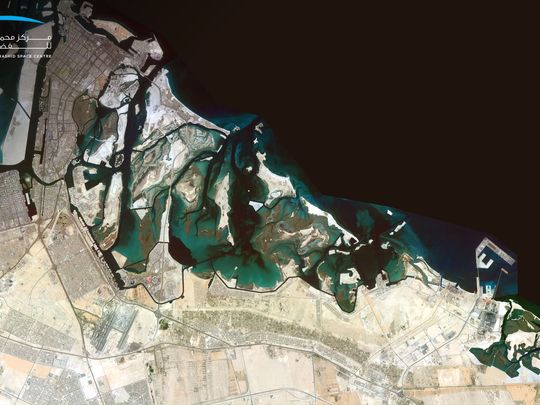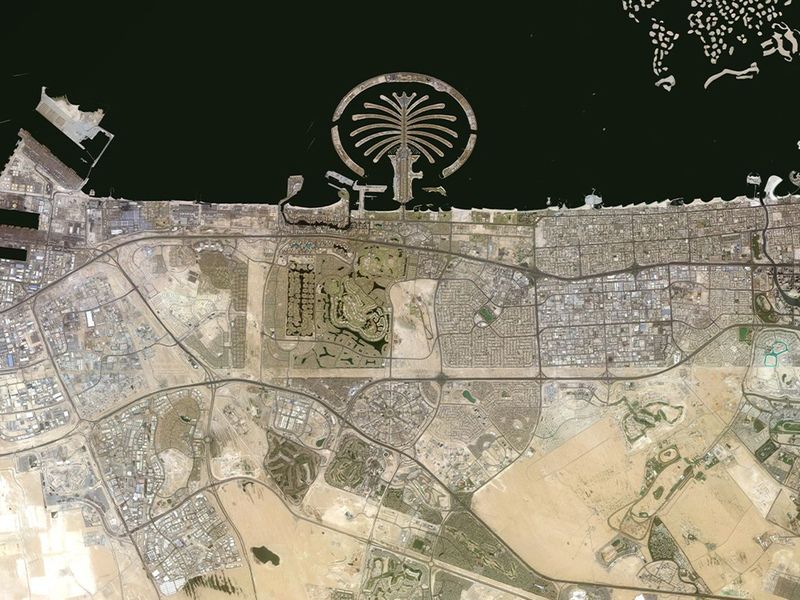
Dubai: The maps of Dubai and Abu Dhabi have been updated using high-resolution images captured by KhalifaSat, the Mohammed Bin Rashid Space Centre (MBRSC) announced on Tuesday.
The UAE’s first high-resolution satellite imaging system called ‘Mosaic’ pieced together individual digital images to create a single high-resolution picture of the UAE terrain.
See more
- Eid Al Adha 2020: See how UAE residents get into the festive mood
- Eid Al Adha 2020: 10 ways partake in the festivities from home
- 2022 Jeep Wagoneer mule spotted testing in Dubai!
- UAE: Reader tries to cancel credit card, bank asks him to pay extra annual fee of Dh1,500
- Gulf News readers share pictures of beautiful mosques in UAE
- Photos: How UAE residents celebrated Eid Al Adha
According to MBRSC, Mosaic provides a comprehensive view of the UAE’s topography, using remote sensing systems, image processing, geographic information systems and artificial intelligence.
The system is part of the MBRSC’s efforts to support federal and local government entities, research and academic institutions as well as the private sector in understanding the geography, topography and environmental impacts of large areas in the UAE more accurately.
“While the service currently provides detailed high-resolution satellite image mosaic of Abu Dhabi and Dubai, Mosaic images of all emirates will be released soon,” MBRSC noted.
“In view of the MBRSC’s efforts to spread knowledge, expand the use of space technologies owned by them and extend cooperation frameworks to all entities, “Mosaic” will be provided to all government and non-governmental entities free of charge for the purpose of benefiting the agencies and enhancing their role in the UAE society,” it added.
Aside from KhalifaSat, MBRSC also owns remote sensing satellites DubaiSat1 and DubaiSat2. These satellites have helped produce several scientific reports and studies that are dedicated to observing and monitoring our planet.
Yousuf Hamad AlShaibani, Director General, MBRSC, commented: “The launch of KhalifaSat’s first satellite image ‘Mosaic’ is of strategic importance to support the infrastructure of all vital sectors in the UAE. This type of satellite imagery is relevant to stakeholders in infrastructure, urban planning, environment and climate change sectors, energy, education, technology, roads and transportation, among others, in the UAE.”
How Mosaic was created
MBRSC collected images of a specific geographic area through the KhalifaSat at specific intervals ranging from days or months.

The images were then combined to form a single comprehensive image with a high visual resolution of up to 0.7 metres in TIFF format, which is well-known for storing raster graphics images.
This is in addition to the satellite’s 90 km land coverage. “Mosaic” differs from other satellite images as it has higher image resolution and clarity due to the use of Geo-referencing system and other modern technologies.
Various stages of image extraction
Ammar Saif AlMuhairi, Head of Image Processing Section, MBRSC, explained Mosaic imaging system goes through systematic stages of image extraction.
He enumerated: “Firstly, individual images scattered over an area are taken by the satellite during a given period. The system then geo-assigns these images using a coordinate reference system to ensure the highest possible resolution. The image correction phase is followed by enhancing contrast and various corrections to make sure that all images are free of distortions.
Read more
- VFS introduces pre-departure COVID-19 testing in UAE
- Getting married? This UAE survey will help you with the costs amid COVID-19
- UAE’s #MarsShot finalists announced
- COVID-19: VPS Healthcare frontline staff volunteer in UAE vaccine trials
- Man in Dubai forges documents, cheats Saudi businessman of Dh1.4 million
- Manager in Dubai charged with sexually abusing female co-worker at Diwali party
“Finally, the colours of the satellite images are matched and blended, followed by the testing of the outcome by the relevant team, and ensuring its correctness before finally releasing it,” he continued.
AlMuhairi added MBRSC will partner with local statistics authorities in promoting the exchange of expertise in addition to providing data to different sectors in order to assist them in drafting reports for infrastructure projects.










